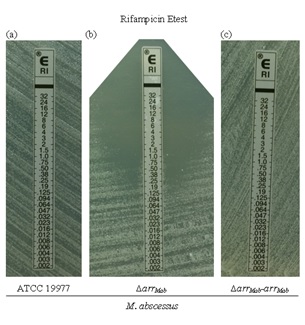Drug resistance and virulence mechanisms of Mycobacterium abscessus
Mycobacterium abscessus, an environmental saprophyte, is one of the most pathogenic and drug-resistant organisms among rapidly growing mycobacteria (RGM). It accounts for 80 % of all lung infections due to RGM, particularly exacerbations of chronic lung disease patients with cystic fibrosis. Currently, there is no reliable antibiotic regimen for the treatment of infections with M. abscessus, as this bacterium demonstrates a high level of intrinsic resistance to many commonly administered drugs, including tuberculosis drugs. The high level of intrinsic drug resistance not only restricts treatment options but also application of common genetic tools to elucidate gene functions.
We recently developed tools for genetic manipulation of M. abscessus. We now exploit these tools for elucidating the molecular mechanisms of drug resistance and virulence of this emerging pathogen. We exploit this knowledge to develop novel antibacterials.

